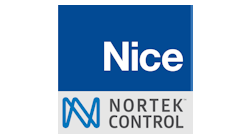Over the last decade, integrating a commercial access control system has meant moving beyond the physical safety and security of a building, to addressing the network security of systems used to monitor and remotely manage different parts of the access control ecosystem, all while adding new subsystems and functionality. The traditional perspective used to be focused on the physical location of the equipment installed in a client’s facility and the equipment was specific to that location. It had to be managed on site and featured “at the edge,” field level integration. Access to the equipment and features were only available at the physical location and service requests had to be dealt with during a truck roll, costing the client and the installer time and money.
With cloud based technologies advancing the capabilities of access control, security dealers and manufacturers are looking more to remote management as a cost-efficient and capable mechanism for expanding services and adding convenience. Cloud based ecosystems share the burden of storage and data across technologies, bringing down costs and bringing greater value to the customer. The latest innovations include use of the cloud and remote access to offer great functionality and lower costs with the field level integration all within secure pipelines.
“Newer API and SDKs for commercial security systems are evolving to include field level and cloud based integration, embedding them together to deliver a better and more robust experience for customers,” said John LaFond, vice president, integrated systems, Nortek Security & Control.
From a dealer perspective, installing systems with secure remote management capabilities, especially ones with a holistic ecosystem approach, means added value and peace of mind for customers. A server based appliance embedded on a client’s network that can be access via the cloud is much more secure than relying on just a web-based app connected to the cloud. Using advanced cloud technologies with equipment at the edge allows dealers to remotely login and control the environment, providing additional RMR opportunities after install and the ability to service without a truck roll, while maintaining a secure pipeline that is much less susceptible to viruses, hacking and disruptive software updates.
The list of potential add-ons in the access control ecosystem has grown significantly as well. Some of the systems that can now be integrated and monitored or managed remotely, include: video analytics, site threat level, after hours management, monitored CCTV, site audio, elevator/floor control, HVAC interface, interactive communication, multi-site administration, site perimeter access, visitor management, parking control, license plate recognition and more.
“Access control used to require more infrastructure and equipment, using time and client resources. Remote monitoring through things like closed circuit TV was easier to sell because customers liked the idea of being able to remotely view their property,” said Bob Ricucci, president and CEO of Advanced Security Technologies. “Now with cloud based integration, the barrier to entry is much lower. We can offer customers a broader range of interoperability and level of service at the right price.”
Security dealers often encounter customers who not only see remote access as more feasible for their install, but also expect to have these features in their systems. Innovation and price efficiency have contributed to the adoption of more cloud based technologies in remote monitoring, but another real driver has been widespread acceptance of remote capabilities resulting from the proliferation of smartphones and other mobile devices, and the convenient they provide through greater connectivity.
“We didn’t get a lot of traction with remote access when it was a server based solution – people were hesitant to say yes and hand off control to their buildings,” remarked Ricucci, “With the changing mindset of clients and general acceptance of remote connectivity, these offerings became more common and profitable.”
Changing customer mindsets was one hurdle to overcome in offering remote access solutions, but changing infrastructure requirements for solutions and the lowering of price points and scalability of software to control 2 doors to 200 doors has made this a winning technology trend in security. Today, building automation system maintenance such as backups and service changes, as well as controlling lights, doors, locks and other security features, can all be done remotely with cloud based access systems.
Seeing this evolving trend, security systems manufacturers are looking at ways to bring a competitive advantage in their products by embedding access control solutions into the overall ecosystem and creating the most secure pipeline possible for remote management. Nortek Security & Control’s next generation professional access control system from Linear is one such example. Remote Management Console (RMC) connectivity within the system is based on an extension of the well-known and proven HTTP protocol with key exceptions. In traditional HTTP connections, the client (web browser) is responsible for opening a connection and sending requests to the equipment’s web server. With RMC, however, it’s the Linear appliance that establishes the HTTP network connection, using its RMC app to open a more secure connection to a dedicated server called the RMC Server. Since the RMC Server simply forwards HTTP requests, without storing any critical data, the RMC service does not introduce any additional data security or privacy risks.
Linear’s top-tier access control appliances come pre-loaded with the Remote Management Console and offer an alternative to port forwarding and virtual private networks (VPN). The use of a remote management application enables easy and secure remote access to the hosted web server, even if the device is located in a private or mobile network behind a router or firewall. Today’s market requires security technologies be protected by a firewall and this type of console ensures secure remote access even when additional cyber security solutions are in place.
The caveat to having great technology is that it becomes a hindrance when it’s not working in unison with other critical technologies. Customers want to control more with less and they want to work with as few vendors as possible and do it as efficiently as possible. Access control platforms with an open architecture that allow the integration of outside brands and systems, even older ones, will emerge. The implementation of more advanced asset tracking and automation processes will streamline operations and lower consumption of energy and other resources for businesses.
More and more dealers are seeing the competitive advantage to all-in-one remote access solutions because they encompass an entire commercial security and access control management ecosystem. Remote access ecosystems open up a variety of revenue streams through enhanced support and RMR services. Features like elevator control, anti-pass back, threat level / lock down, partitioning, custom reports, administrative audit trails and video viewing can be securely managed on or offsite through remote dashboards.
“These are the default solutions we are offering our clients today – it’s like buying a Mercedes S class and not putting any gas it. There are wonderful systems available and for a small charge a month, you can amplify value three or four times,” added Ricucci.
Even with a small monthly charge, many access control systems are actually lowering the total cost of ownership through technology. This is reflected in a number of ways. Solid-state Linux design lowers TCO by removing many of the license fees, simplifying installation, lowering hardware costs and providing a flexible and secure embedded appliance at the core. With this type of system, there are no monthly cloud service fees, no client and database license fees, and no need for dedicated PC workstations. Plus, the pre-activated remote management console opens up RMR opportunities and provides feature rich security and access control management.
“The trend in the market is to deliver embedded access control solutions that offer broad compatibility with a wide range of systems and a truly secure pipeline for remote management,” said John LaFond, vice president, integrated systems, Nortek Security & Control. “Ultimately, it’s about opening up new opportunities for recurring revenue and attachment sales to increase the lifetime value of every customer, while simultaneously lowering their operating costs and meeting their security and access control needs more effectively.”



